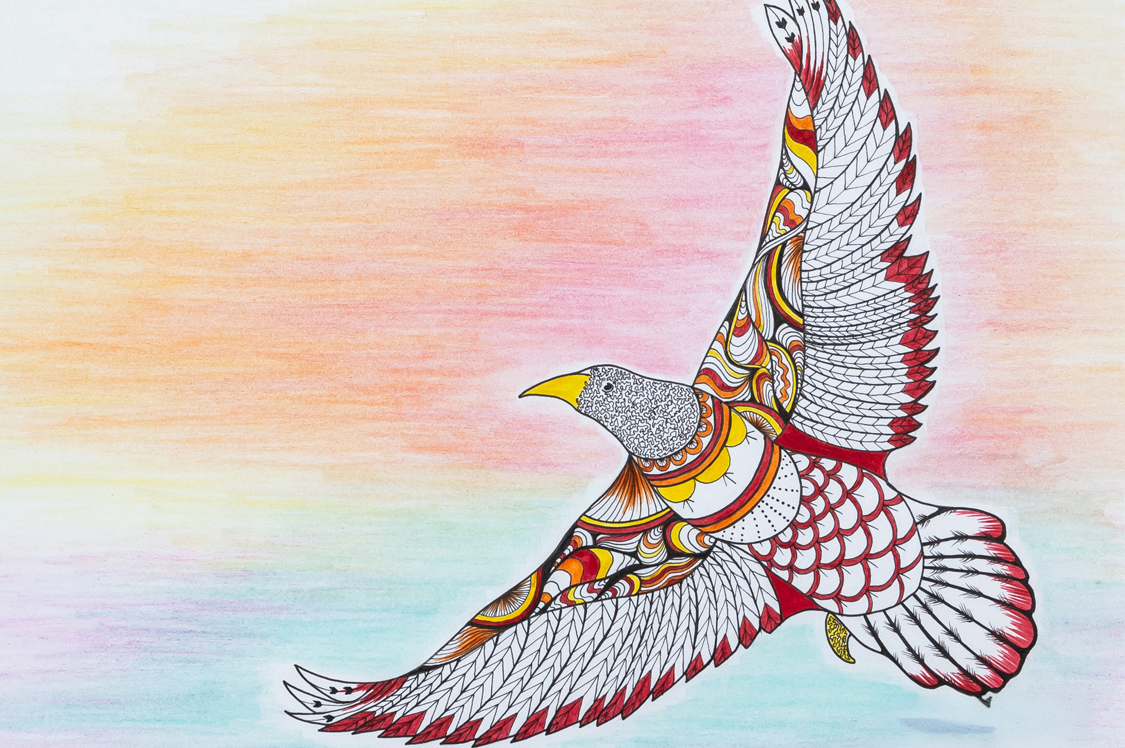
Put truth and reconciliation into practice
Register NowThe Path: Your Journey through Indigenous Canada is a six-module Indigenous cultural awareness course will help you better understand Indigenous issues in the legal profession.
Topics
- Legal issues surrounding the Canadian Constitution
- The Indian Act
- Historical and modern treaties
- Supreme Court of Canada Rulings
- Canada’s incarceration statistics
- Gladue Principles
- Canada’s existing Indigenous Courts
- Alternative justice systems
Diversify Your Knowledge
This program is on-demand and can be done at your own pace. You’ll have the option to download a certificate when you complete the program.
- CBA member fee: $95 plus tax
- Non-member fee: $195 plus tax
- Contact us to request group rates
The Path was created and updated by NVision Insight Group, a majority Indigenous-owned company, and was developed with First Nations, Inuit and Métis advisors and reviewers. An Indigenous lawyer has also vetted the program for accuracy.
Explore the modules
-
remove_circle_outline add_circle_outline
Module 1: Name Calling
Lesson 1: Indians, Inuit and Métis
Your journey begins with an exploration of what the Canadian Constitution calls the ‘Aboriginal people of Canada', and a review of why and how First Nations, Inuit and Métis are distinct. Upon completion of this lesson, you will be able to:
- Identify the three Indigenous groups named in Canada’s Constitution Act, 1982
- Define terms such as ‘First Nations,’ ‘Aboriginal’ and ‘Indigenous,’ and know when to use specific terms
- Understand why it is important to recognize and affirm the diversity of First Nations, Inuit and Métis in Canada
Lesson 2: Stereotypes and Misconceptions
We will debunk some of the most egregious of these stereotypes and misconceptions and encourage you to counter them. Upon completion of this lesson, you will be able to:
- Explain common and enduring stereotypes about First Nations, Inuit and Métis in Canada
- Summarize the history and various terms used to describe Indigenous Peoples
- Understand what those words mean today and which terms to use in various situations
-
remove_circle_outline add_circle_outline
Module 2: Land, People and Stories
Lesson 1: Land Acknowledgements
What is a land acknowledgement, why are they done and how should they be used? In this lesson you will learn about the meaning and importance of land acknowledgements. Upon completion of this lesson, you will be able to:
- Understand the origin of land acknowledgements in Canada and explain their importance
- Understand that land acknowledgements are a First Nations convention
- Describe whose land you live and work on
- Make your statement meaningful, and not performative
Lesson 2: Origin Stories
Stories are integral to Indigenous culture; they shape our societies. You will learn about the importance of storytelling, with examples from across the land now called Canada. Upon completion of this lesson, you will be able to:
- Understand the importance of storytelling to Indigenous Peoples
- Provide examples of First Nations stories, laws, societies and cultures that have existed here ‘since time immemorial’
- Locate on a map, some of the nations that existed here prior to European contact
Lesson 3: Inuit across the North
For many Canadians ‘Indigenous’ cultural awareness refers to ‘First Nations’ and sometimes ‘Métis’, with little or no awareness of Inuit. This lesson will introduce you to pre-contact Inuit culture, review the major milestones that have impacted Inuit since the arrival of Europeans, and describe how each unique Inuit region came to be shaped and defined through the land claim process. Upon completion of this lesson, you will be able to:
- Describe major milestones in Inuit history
- Understand the nature and basis for Inuit land claims across the North
- Summarize the history and defining moments in the creation of the modern Nunavut, Nunavik, Nunatsiavut and the Inuvialuit regions
-
remove_circle_outline add_circle_outline
Module 3: Canada’s Colonial History
Lesson 1: From the Arrival of Strangers
The first Europeans to arrive on these shores were looking for a shortcut to Asia. They did not find one, but once they saw the vast natural wealth, they were keen to exploit this “new” world. This had an enduring and disastrous impact on Indigenous Peoples. Upon completion of this lesson, you will be able to:
- Describe the perspectives of First Nations and Europeans upon first contact
- Link the establishment of the fur trade with the emergence of the Métis Nation in Canada
- Describe Peace and Friendship Treaties
- Summarize the importance of the Royal Proclamation of 1763
Lesson 2: Denial of Rights from 1763 to the Dominion of Canada
While the Royal Proclamation acknowledged that there was such a thing as ‘Indian land’, the relationship between the British Crown, European settlers and First Nations and Métis Peoples began to unravel in the 19th century. Upon completion of this lesson, you will be able to:
- Explain why and how the British Crown paid restitution to British loyalists after the American Revolution and the War of 1812
- Describe the historical and legal nature of a treaty
- Summarize the Upper Canada Land Surrenders, the Douglas Treaties and the Robinson treaties
Lesson 3: Colonization since Confederation – Numbered Treaties
The new Dominion of Canada was keen to build a railroad across the country and ‘open the West’ for agriculture, resource development and settlement. They first needed to purchase Rupert’s Land from the Hudson’s Bay Company, then enter treaties with First Nations. Upon completion of this lesson, you will be able to:
- Describe the sale of Rupert’s Land
- Summarize the numbered treaty process after 1870
- Recognize the differences between how Canada saw these treaties, and how the First Nations saw these treaties
Lesson 4: Colonization since Confederation – Other Defining Moments
When the Dominion of Canada was created by the British North America Act in 1867, the new government introduced laws, policies and processes that devastated Indigenous Peoples. Upon completion of this lesson, you will be able to:
- Describe the history, background and scope of the Indian Act
- Summarize the legacy and long-term impacts of Residential Schools
- Describe the failed Northwest Half-breed Commission and Métis scrip
- Describe the events and impact of forced Inuit relocations
- Recognize the individual and social impact of the “Sixties Scoop”
- Summarize the circumstances and historical events that led to the Oka Crisis
-
remove_circle_outline add_circle_outline
Module 4: Contemporary Realities
Lesson 1: We Reap What We Sow
In this lesson, you will explore how the past informs the present. Understand how colonial laws and policies have impacted Indigenous Peoples and led to them lagging behind on all indicators of health and community wellbeing. Learn about the ever-present reality of racism in Canada today. Upon completion of this lesson, you will be able to:
- Describe the connection between colonial policies and health inequities for Indigenous Peoples today
- Explain the lack of progress in reducing the gaps between Indigenous and non-Indigenous Peoples in community well-being
- List examples of racism in Canada’s health system
Lesson 2: The City is Home
This lesson discusses the realities faced by First Nations, Inuit and Métis who live in urban settings. Explore how they remain connected to culture, language and land. Learn about the importance of the Friendship Centre movement for connection, support and program and service delivery. Upon completion of this lesson, you will be able to:
- Describe some key reasons why Indigenous Peoples move into urban centres
- Explain the challenges faced by Indigenous Peoples in urban centres
- Summarize the establishment of the Friendship Centre movement and the role that Friendship Centres play in supporting Indigenous Peoples in cities and towns across Canada
-
remove_circle_outline add_circle_outline
Module 5: Relationship Building
Lesson 1: Worldviews and Cultural Values
This topic discusses some of the cultural values and traditions of Canada’s Indigenous Peoples and describes how these shape Indigenous perspectives and views of contemporary Canadian society. Upon completion of this lesson, you will be able to:
- Recognize some distinctive cultural values and traditional beliefs of First Nations, Inuit, and Métis Peoples in Canada
- Describe the ways in which cultural and traditional beliefs about the land, kinship systems, culture, language and ways of knowing continue to shape Indigenous perspectives
Lesson 2: Increasing Your Engagement IQ
This lesson provides some suggestions on how to work and communicate with Indigenous colleagues and partners and strengthen your relationships with Indigenous Peoples. Upon completion of this Lesson, you will be able to:
- Describe protocols for working with First Nations, Métis and Inuit communities and Elders
- Describe some common verbal and non-verbal styles of communication among First Nations, Inuit and Métis
- Explain ways in which embracing cultural differences can lead to successful partnerships and business practices
- Describe some First Nations, Inuit and Métis cultural symbols and elements
Lesson 3: Indigenous Peoples and the Criminal Legal System
This lesson is exclusive to the CBA, created with a grant from the Department of Justice Canada. It examines the overrepresentation of Indigenous Peoples in the criminal legal system and Gladue Principles as they relate to addressing this issue. Upon completion of this lesson, you will be able to:
- Recognize why there is an overrepresentation of Indigenous Peoples in the criminal legal system in Canada
- Understand how Canada’s legal system has addressed this issue to date
- Identify the Gladue-related cases and how Gladue came to be
- Recognize the existing Indigenous Courts and identify alternative justice systems
-
remove_circle_outline add_circle_outline
Module 6: Towards Truth and Reconciliation
Lesson 1: Rights and Resurgence
Explore the growing assertion of Aboriginal and Indigenous rights in this lesson. Topics include the Federal government’s White Paper of 1969, the creation of modern treaties, the emergence of movements like Idle No More, recent Supreme Court of Canada cases, the growth of self-government and the United Nations Declaration on the Rights of Indigenous Peoples. Upon completion of this lesson, you will be able to:
- Describe the importance of the “White Paper” of 1969 in the resurgence of the modern Indigenous rights movement
- Understand how modern treaties differ from historic treaties
- Identify the major Supreme Court rulings regarding Aboriginal Title, the Duty to Consult and Accommodate, and Métis rights
- Discuss the significance of the United Nations Declaration on the Rights of Indigenous Peoples
- List and summarize the roles of the major Indigenous political organizations in Canada
Lesson 2: The Path Forward
In this final Lesson, you will learn what true reconciliation can look like, and about First Nations, Inuit and Métis individuals, communities, and governments leading efforts in different sectors. Upon completion of this lesson, you will be able to:
- Describe some movements and advancements regarding Truth and Reconciliation
- Summarize these key reports and speak to their relevance to Canadians on the path of Truth and Reconciliation
- Describe and provide an example of ‘two-eyed seeing’ as a way to consider reconciliation
- Understand the personal and societal need for Indigenous cultural awareness
Accreditation and CPD Hours
This program includes six modules and will take up to seven hours to complete. If you are completing Indigenous Peoples and the Criminal Legal System only, it takes one hour to complete. Find a list of CPD hours by province.











